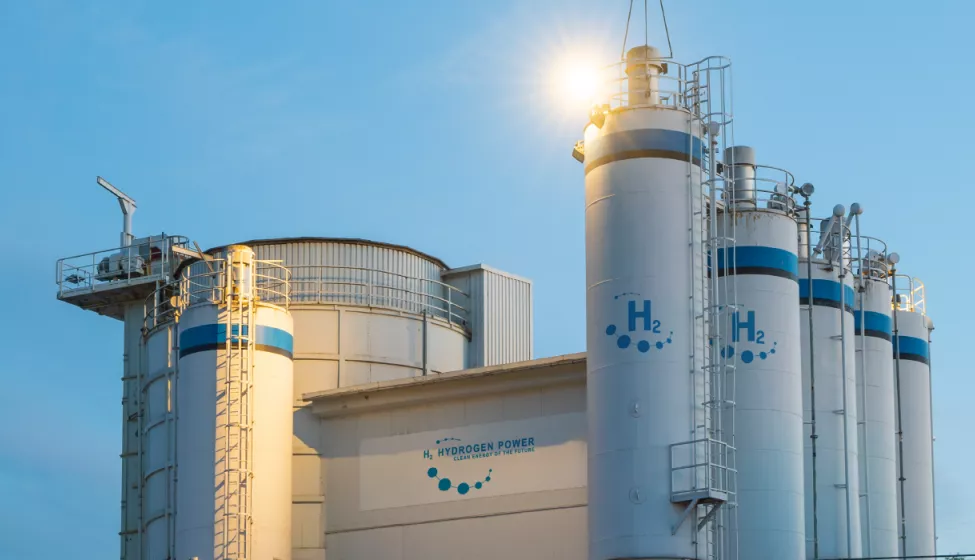January 21, 2021
Power-to-gas is an emerging technology that converts surplus renewable energy to gaseous energy carriers, typically via electrolysis of water that generates hydrogen. The hydrogen is then injected and mixed into the natural gas pipeline network for downstream use.
Scientists hope power-to-gas technology will gradually provide a solution to the fluctuations in renewable power generation (such as solar and wind) by offering scalable energy storage capable of timely response to changes in demand. Using hydrogen to reduce the amount of natural gas necessary to produce a given quantity of heat also results in a lower carbon footprint.
While power-to-gas technology is an increasingly attractive form of renewable energy storage for utilities, the presence of hydrogen changes some properties of natural gas, such as energy content and flame propagation speed.
Though many demonstration projects have been launched in Europe, and SoCalGas is a leader in bringing power-to-gas technology to the United States, at the same time, owners and operators are considering how best to mitigate risks posed by changes in natural gas composition, such as flame stability issues, increased flame temperature, potential incompatibilities with seals and gaskets, gas metering, and pipeline embrittlement. Doing so can help to realize the potential economic and environmental benefits of power-to-gas technology while maintaining the integrity of pipeline operations and combustion equipment, such as gas turbines, water heaters, boilers, and furnaces, and preventing negative consequences to the health and safety of users.
Mitigating Risks to Infrastructure Integrity
Substantial changes to the chemical composition of natural gas may pose potential risks to the integrity of pipeline infrastructure.
As the amount of hydrogen injected into the natural gas grid increases, the potential for hydrogen embrittlement of steel in natural gas pipelines, compressor stations, and gas meters becomes a credible concern. The elastomeric materials used in fittings and gaskets may also be challenged to withstand hydrogen diffusion. As a result, sealing difficulties may occur at fittings that are effective with natural gas but not hydrogen, and some traditional mechanisms for detecting natural gas leaks such as flame ionization detectors (FID) and differential absorption lidar (DIAL) will need to evolve once natural gas has been diluted with hydrogen.
Academic studies have generally concluded that natural gas pipelines can safely operate with a 5-10% hydrogen content. However, at this time of transition, utilities can minimize the above risks by monitoring natural gas pipeline infrastructure that is exposed to injected hydrogen.
Utilities and manufacturers of combustion equipment may also be subject to new and evolving regulations for their location of application. For instance, SoCalGas Rule No. 30 regulates the specifications of gas to be injected into the utility pipeline. This can be understandably challenging as the required safety margins, codes, and standards for this emerging technology have to be carefully interpreted and may vary both globally and across the United States.
Recently, three California utilities have jointly proposed a hydrogen blending demonstration program to the Public Utilities Commission studying the impact of hydrogen blending on isolated polyethylene plastic and steel natural gas distribution piping systems.
Mitigating Risks to User Safety
The presence of hydrogen in natural gas pipelines can also present a critical challenge to user safety if the appropriate precautions are not taken. In particular, hydrogen can increase the risk of flashback, a phenomenon that occurs when a flame moves upstream and travels back into the supply system. The combustion devices with premixed and partially premixed flames are more susceptible to this combustion instability, which is commonly linked to explosions and other associated damages. Additionally, studies show that use of hydrogen blended in natural gas may change the operating temperature of gas-burning appliances and equipment, which warrants more frequent maintenance.
As utilities continue to adopt and integrate power-to-gas solutions into the existing infrastructure, it is necessary that owners and operators prioritize additional levels of protection to help mitigate new risks to infrastructure and user safety.
Over time, we expect manufacturers of industrial combustion equipment such as turbines, boilers, and consumer products including furnaces, water heaters, ovens, cooktops, and other gas appliances to design products that operate on a mixture of both natural gas and hydrogen.
It will take years for these technologies to mature and achieve market penetration in both industrial and consumer equipment products. In this transition period, strategies to 1) adopt and incorporate responsible precautions for the safe operation of a variety of associated devices and systems and 2) educate consumers about the benefits and risks of blended fuels will be important to minimize negative outcomes that may hinder public acceptance of power-to-gas technologies.
How Exponent Can Help
Exponent's multi-disciplinary teams of materials scientists and mechanical, chemical, and thermal engineers have expertise in natural gas systems, combustion technologies, and risk assessment methodologies. We can help utilities and other stakeholders optimize strategies for hydrogen injection into the natural gas grid and build science and engineering-based strategies to mitigate risks to pipeline infrastructure and user safety.


